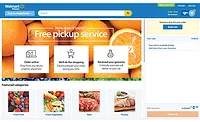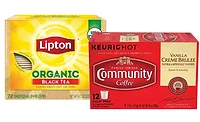Consumable eCommerce gaining traction
More retailers offer online options

Consumer access to virtually anything can be done through the convenience of the Internet. Grocery shopping is no exception anymore. In fact, online sales of groceries more than tripled between 2013 and 2018, according to Rockville, Md.-based Packaged Facts “Online Grocery – October 2018” report. Although consumable eCommerce is a growing market, it accounts for only 2 percent of total grocery spending, it explains. As retailers work out the kinks, experts are forecasting strong growth for the eCommerce channel.
“Most of the growth has occurred since 2016 as eCommerce platforms and conventional grocery stores have increased both their participation and their geographic footprint with expanded service areas,” the report states. “For instance in August 2017, Aldi began a partnership with Instacart in three cities to allow online orders and delivery, and in September 2018, the company announced the partnership would expand to all of its stores in the U.S.”
Similar to Aldi, other companies are delving into the consumable eCommerce market. For example, Amazon’s acquisition of Whole Foods Market and Walmart’s acquisition of Jet.com, resulted in both companies accounting for nearly 28 percent of online grocery sales, according to Packaged Facts.
A mobile majority
Jon Hauptman, senior director of analytics at Inmar, Winston-Salem, N.C., notes that eCommerce sales for food and consumables reached $46 billion last year, marking a 26 percent increase over the year before and representing almost 3.7 percent of the total grocery marketplace, citing data from Inmar’s “2018 Future of Food Retailing” report.
With the rise of consumable eCommerce, industry experts identify several trends that have occurred within the past year. Hauptman, along with Diana Medina, director of eCommerce solutions and analytics at Inmar, recognize the following as current trends:
- Shoppers: The number of U.S. consumers who have purchased grocery products online versus a year ago doubled from about one-quarter to one-half.
- Delivery models: More retailers are moving beyond click-and-collect models to add delivery options.
- Endless aisles: More retailers are expanding online assortment via “endless aisle” offerings to add additional products not available in brick-and-mortar locations.
- Emerging subscription services: Subscriptions allow for convenient meal options and differentiated product offerings.
The growth of eCommerce mainly can be attributed to availability, experts say. “[There’s an] almost ubiquitous availability of eCommerce grocery options [that] consumers can shop,” Hauptman says. “More and more brick-and-mortar retailers are rolling out eCommerce offerings.”
As availability is a characteristic to the eCommerce channel, the surge in mobile device use also can be attributed to its growth. “During the five-year period [between 2013 and 2018], the number of mobile Internet connections grew significantly, at an annualized rate of 10.7 percent,” states Los Angeles-based IBISWorld’s July “E-Commerce & Online Auctions in the US” report.

Click to enlarge
According to Packaged Facts, Walmart’s Jet.com, along with Amazon.com, account for nearly 28 percent of online grocery shopping. (Image courtesy of Walmart/Jet.com)
As a result, retailers have introduced mobile applications to tailor their shopping experiences to consumers’ buying habits, the report explains. Companies like Amazon.com, eBay Inc. and Jet.com all have mobile applications that give consumers the ability to purchase products directly from their phones, it says.
In correlation to mobile device use being more popular among younger consumers, the same can be said for online consumable shopping, experts note. “Younger shoppers, including millennials, are prime targets for online grocery shopping,” Inmar’s Hauptman says. “They’re increasingly looking for ways to off-load chores in favor of spending time the way they want.”
Millennial moms also are a prime target for online grocery offerings, as the demographic still is the main decision-maker in household when it comes to nutrition and shopping for everyday items, Inmar’s Medina adds.
Chicago-based Mintel’s May “Online Shopping – US” report, echoes similar sentiments on the demographics of frequent online shoppers. Current and future growth is fueled by sales coming from mobile devices and from younger, digitally native adults comprising a larger share of the U.S. population, it says.
Likewise, Packaged Facts highlights millennials and Gen Xers, particularly parents with young children, as online shopping opportunists. “These consumers already use the Internet for daily activities and shop online regularly,” the report says. “These digital natives are comfortable with buying virtually and have potential longevity as online grocery customers. Parents with young children [are] a very busy group that values family time and eating and cooking healthy meals. The convenience of online grocery shopping can allow more parents to provide these meals by saving them time with the shopping process.”
Brick-and-click
As eCommerce exerts its presence in the consumables market, the majority of business comes from the business-to-consumer (B2C) channel, experts note.
“ECommerce grocery retailers have tailored their offerings primarily to the B2C channel, i.e., to shopper households, as a complement or replacement to regular in-store stock-up trips for the family,” Inmar’s Hauptman says.
“[Business-to-business] (B2B) grocery is largely an untapped opportunity,” he continues. “Businesses need consumables and are forced to navigate consumer-oriented eCommerce sites with myriad options not relevant to businesses to fulfill their needs. Instead, eCommerce grocers have a great opportunity to establish parallel B2B sites focused on offering products that are most in demand from area businesses.”
To put this into perspective, Boston-based Drizly is breaking through the market with its B2C and B2B online alcohol retail service. Using a smartphone or computer, consumers of legal drinking age can visit the app or website to access a selection of beer, wine and spirits from local retailers, with complete price transparency, and then purchase and schedule in-store pickup or delivery in fewer than 60 minutes, the company says.
Active in more than 100 cities, Drizly’s eCommerce presence also helps drive traffic to retailers’ brick-and-mortar locations. A recent study conducted by Drizly revealed that 64 percent of first-time customers said that they had subsequently shopped, or would strongly consider shopping at the retailer’s physical location after their initial purchase through Drizly, the company said in a statement.
Although click-and-collect and delivery models are commonly used by retailers, implementing delivery can be challenging. Managing home delivery is something most grocers do not have strong experience with, and they don’t want to delay online grocery until home delivery is “figured out,” Inmar’s Hauptman says.
Several grocers have established online grocery with the help of third-party services such as Instacart, Shipt and Rosie, which provide people who pick the orders and then deliver the orders to shoppers’ homes, he explains.
“However, the retailer loses some of their control of the ‘brand’ and the experience under this model, i.e., the picking/delivery company is a highly visible partner,” Hauptman says. “Consequently, such third-party models may not be comfortable long-term solutions for many grocers who want full control over their brands and shoppers.”
As more companies realize the benefits of applying some sort of eCommerce, experts note the channel won’t totally take over the consumables market. “While a primary trend shows more and more brick-and-mortar retailers establishing and expanding their eCommerce offerings, we’re also seeing expansion from the other direction,” Hauptman says.
“[For example,] eCommerce grocery giant Amazon is focusing more intently on growing their brick-and-mortar presence in parallel with their online grocery business,” he continues. “They continue to invest in, and learn from, their Whole Foods stores, and they’re aggressively opening new food stores such as small AmazonGo locations. Amazon recognizes that winning the grocery industry requires presence in both the brick-and-click realms.” BI
Looking for a reprint of this article?
From high-res PDFs to custom plaques, order your copy today!






